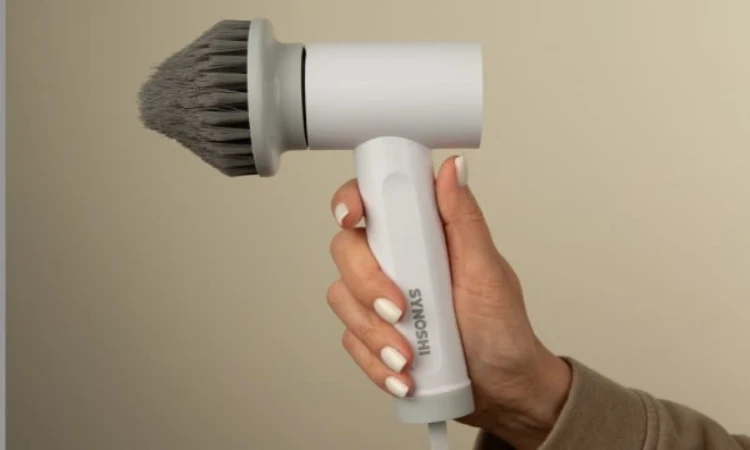What Makes a Good Cleaning Brush? Materials, Bristle Types and More
A good cleaning brush is vital for effective maintenance across various surfaces. The choice of materials greatly impacts its durability and functionality. Bristle types also play an important role, influencing the brush’s performance on different materials. Understanding the balance between flexibility and stiffness can enhance cleaning efficiency. As one evaluates these factors, it becomes clear that the right brush can make a considerable difference in achieving ideal cleanliness. What exactly should one consider when selecting the perfect cleaning tool?
The Importance of Material Quality
Material quality plays an essential role in the effectiveness and longevity of cleaning brushes. High-quality materials, such as durable plastics and resistant fibers, enhance the brush’s ability to tackle various tasks within household cleaning. For bathroom cleaning, brushes made from moisture-resistant materials prevent mold growth, while those used for kitchen cleaning benefit from non-porous surfaces that inhibit bacteria. Additionally, robust construction guarantees that the brush maintains its shape and functionality over time, reducing the need for frequent replacements. Selecting cleaning brushes with superior material quality not only improves cleaning efficiency but also promotes a hygienic environment in both kitchens and bathrooms. Link klicken for more details on choosing high-quality cleaning brushes.
Understanding Bristle Types
Bristles are a critical component of cleaning brushes, influencing their performance across different surfaces and tasks. Various bristle types cater to specific cleaning needs, such as soft bristles for delicate surfaces like car cleaning, preventing scratches while effectively removing dirt. Conversely, stiff bristles excel in outdoor cleaning, tackling tougher grime and debris with ease. Synthetic bristles resist wear and moisture, making them suitable for both indoor and outdoor applications. Natural bristles, while softer, can provide superior performance on sensitive surfaces but may require more care. Understanding these distinctions helps users select the right brush for best cleaning results.
Flexibility vs. Stiffness: Finding the Right Balance
While selecting a cleaning brush, understanding the balance between flexibility and stiffness is essential for achieving excellent cleaning results. Flexibility in bristle types allows brushes to conform to various surfaces, effectively reaching crevices and contours. Conversely, stiffness provides the necessary strength for tackling tough, ingrained dirt and grime. A well-designed cleaning brush often incorporates a combination of both characteristics, enabling it to adapt to different cleaning tasks. For instance, soft bristles may excel in delicate applications, while stiffer bristles are suited for heavy-duty scrubbing. Ultimately, choosing a brush with the right balance guarantees superior performance across diverse cleaning challenges.
Choosing the Right Brush for Different Surfaces
Selecting the appropriate cleaning brush for different surfaces is fundamental to achieving ideal cleaning results. For delicate surfaces like glass or painted walls, soft bristle types are recommended to prevent scratches. In contrast, tougher surfaces such as tile or concrete can benefit from stiffer bristle types that effectively tackle grime and buildup. Natural bristles excel on porous materials, absorbing dirt better, while synthetic bristles provide durability and resistance to chemicals. By understanding the compatibility between bristle types and the specific requirements of various surfaces, one can choose the right cleaning brush to enhance efficiency and maintain the integrity of the surfaces being cleaned.
Maintenance Tips for Longevity and Performance
To guarantee the longevity and performance of cleaning brushes, regular maintenance is vital. First, brushes should be cleaned after each use to remove dirt and debris, preventing bristle damage. Soaking the cleaning brush in warm, soapy water helps dislodge stubborn residues. Additionally, inspecting the bristles for wear or deformities is essential; replacing brushes with damaged bristles guarantees peak cleaning performance. Storing brushes in a dry, ventilated area prevents mold and prolongs lifespan. Finally, avoiding harsh chemicals on cleaning brushes maintains their integrity, assuring they remain effective for various tasks. Adhering to these maintenance tips will enhance the overall functionality of cleaning brushes.
Conclusion
In conclusion, a good cleaning brush is defined by its high-quality materials, appropriate bristle types, and a careful balance of flexibility and stiffness. By selecting brushes tailored to specific surfaces and cleaning tasks, users can achieve the best results. Additionally, understanding maintenance practices enhances the brush’s longevity and performance, ensuring it remains an effective tool for various cleaning needs. Ultimately, investing in the right brush contributes greatly to efficient and effective cleaning strategies.

